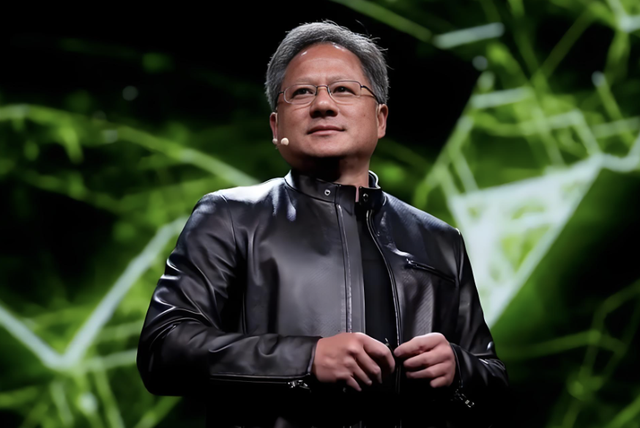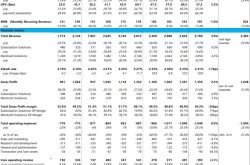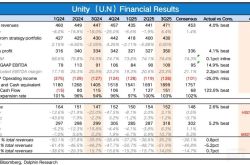From Gaming Graphics to AI Dominance: NVIDIA's Market Value Soars Past France and UK GDP Combined
![]() 07/11 2025
07/11 2025
![]() 533
533

On July 10, local time, the U.S. stock market witnessed a historic milestone – NVIDIA, the global chip titan, surged to $164.50 per share during intraday trading, pushing its total market value above the $4 trillion mark for the first time. This feat positions NVIDIA as the world's first listed company to achieve such a monumental valuation.
NVIDIA's market value surge is intricately tied to the explosive growth of global AI technology. As a global leader in GPU (Graphics Processing Unit) technology, NVIDIA's products have emerged as the cornerstone infrastructure for training large language models and supporting cloud computing platforms. Data indicates that by the first half of 2025, NVIDIA's market share in the global high-performance AI accelerator market had surpassed 90%, with its A100, H100, and Blackwell series chips becoming the "gold standard" for tech giants like Microsoft, Google, and Meta.
NVIDIA's latest financial report highlights a data center business revenue of $39.1 billion in the first quarter of 2025, marking a year-over-year growth of over 100% and accounting for 89% of its total revenue. Market analysts emphasize that the "golden wave" of generative AI is fueling a global surge in demand for high-performance computing chips, with NVIDIA, leveraging its technological barriers and ecological advantages, firmly holding the industry's top spot.
Tech Giants Rewrite the Economic Landscape, Surpassing Developed Nations' GDP
What does a market value of $4 trillion signify? This figure is on par with the combined GDP of France and the UK in 2024 and surpasses the total market capitalization of countries like Germany and Brazil. NVIDIA's rise not only reshapes the competitive landscape of the technology industry but also underscores the profound influence of a single company within the global economy.
"The market unequivocally believes that AI is the future, and NVIDIA stands as the company most poised to capitalize on this 'gold rush,'" stated Steve Sosnick, chief market strategist at Interactive Brokers. Since the end of 2022, when ChatGPT ignited the AI wave, NVIDIA's share price has skyrocketed by over 1000%, with a year-to-date increase of 22% in 2025, making it one of the highest-weighted stocks in the S&P 500 index.
Despite its promising future, NVIDIA's path is not without challenges. In early 2025, the launch of low-cost models by Chinese AI company DeepSeek raised concerns about a potential slowdown in AI infrastructure investment, temporarily pressuring NVIDIA's share price. Additionally, U.S. chip export restrictions on China have impacted its business in the region, which previously accounted for a quarter of NVIDIA's global revenue, with sales reaching $17 billion in 2024.
More severe challenges loom within the ecosystem. Recently, it was revealed that NVIDIA's key customer OpenAI is utilizing Google's in-house TPU chips to power ChatGPT, while tech giants like Amazon and Microsoft are accelerating their chip development efforts to reduce their reliance on NVIDIA. Furthermore, the looming threat of quantum computing poses a potential disruptive risk. While NVIDIA asserts that quantum technology will take another 10-15 years to mature, industry experts believe breakthroughs may come sooner than anticipated.
In response to these challenges, NVIDIA announced the construction of the world's first industrial AI cloud facility, the "AI Factory," in Germany, equipped with 10,000 Blackwell GPUs. The company is collaborating with software vendors such as Siemens and Ansys to promote AI adoption in manufacturing. NVIDIA CEO Jen-Hsun Huang envisions traditional data centers evolving into "AI Factories," where these facilities will produce "intelligence tokens" akin to power plants, fueling various industries.
Institutional investors remain bullish on NVIDIA's long-term prospects. Citibank upped its target price from $180 to $190, while Loop Capital analyst Ananda Baruah set a Wall Street high target price of $250, corresponding to a market value of nearly $6 trillion. A Bernstein report forecasts NVIDIA's GB200 rack shipments to reach 10,000 units in the third quarter of 2025, with the annual AI server output value expected to exceed $3 billion.
NVIDIA's market value breakthrough is not merely a victory for one company but a microcosm of AI technology reshaping the global economy. From chip design to data centers, autonomous driving to robotics, NVIDIA is spearheading a new industrial revolution with a blueprint for a "decade-long AI infrastructure construction cycle."
Evolution from Gaming Graphics Cards to AI Dominance
When NVIDIA's market value eclipsed the $4 trillion mark, the global tech community was stunned. Founded in a California garage in 1993 by Jen-Hsun Huang, Chris Malachowski, and Curtis Priem, the company has transformed from a graphics chip designer to a "provider of infrastructure" for global AI computing power over 32 years. Its journey is a testament to technological disruption and business acumen.
NVIDIA's inception was fraught with challenges. In 1995, the company's first product, the NV1 chip, struggled due to its advanced technology and poor compatibility, nearly depleting the $2 million in seed funding from Sequoia Capital. To survive, the company laid off employees, reducing its workforce to just over 30, and teetered on the brink of bankruptcy. The turning point came in 1997 with the launch of the world's first 128-bit 3D processor, the Riva 128, which sold over a million units within four months due to its support for Microsoft's DirectX interface, solidifying the foundation for graphics acceleration technology.
In 1999, NVIDIA introduced the world's first GPU (Graphics Processing Unit), the GeForce 256, which coined the term "GPU" and reclaimed 3D rendering from the CPU. That same year, the company went public on Nasdaq at $12 per share, with a market value of just $200 million. At this juncture, NVIDIA was still labeled a "gaming graphics card company."
In 2006, NVIDIA unveiled the CUDA parallel computing architecture, a move Jen-Hsun Huang deemed "the most significant strategic turning point in the company's history." CUDA enables developers to write GPU general-purpose computing programs using high-level programming languages, transforming GPUs from graphics processors into "high-performance parallel computing units." Initially questioned by Wall Street due to substantial investments, CUDA's potential fully materialized in 2012 when the AlexNet deep learning model won the ImageNet competition, relying on two NVIDIA GPUs, proving the disruptive value of GPUs in AI for the first time.
Since then, NVIDIA has fortified barriers within the CUDA ecosystem. As of 2025, over 5 million developers worldwide utilize the CUDA platform, and 95% of AI training tasks rely on its toolchains. Morgan Stanley analysts noted, "CUDA is not merely software but a 'computing revolution' that elevates NVIDIA from a hardware supplier to an 'operating system provider' in the AI era."
In 2016, NVIDIA donated the first AI supercomputer, the DGX-1, to OpenAI, with Jen-Hsun Huang famously stating, "For the future of computing and humanity, I donate the world's first DGX-1." This gesture solidified NVIDIA's core position in the AI revolution. In 2020, the Ampere architecture GPUs (such as the A100) were released, boasting 20 times the computing power of their predecessors, becoming the "gold standard" for large model training. In 2022, the Hopper architecture H100 was launched, optimized for large-scale AI; the same year, ChatGPT ignited demand for generative AI, with NVIDIA's share price surging over 200% and its market value exceeding $1 trillion.
In 2025, NVIDIA's Blackwell architecture GPUs (such as the B100/B200) integrated trillions of transistors, supporting multimodal AI training, further entrenching its technological barriers. According to the Bernstein report, GB200 rack shipments are projected to reach 10,000 units in the third quarter of 2025, with the annual AI server output value expected to exceed $3 billion. NVIDIA's data center business revenue has accounted for 89% of total revenue, solidifying its core position.
On July 9, NVIDIA's share price surged to $164.42 intraday, pushing its market value above $4 trillion for the first time, surpassing Microsoft and Apple to top the global list. This figure is equivalent to France's GDP in 2024 and also approaches the combined market value of the 214 lowest-ranked stocks in the S&P 500 index.
Jen-Hsun Huang's net worth has soared to $143 billion, just $10 billion shy of Warren Buffett. Analyst Ananda Baruah even set a target price of $250, corresponding to a market value of $6 trillion. However, the market remains vigilant: if AI applications fall short of expectations or geopolitical conflicts escalate, NVIDIA's "computing power myth" may face significant challenges.
From three young entrepreneurs in a garage in 1993 to now controlling a "hidden empire" of global AI computing power, NVIDIA's rise underscores Jen-Hsun Huang's credo: "Computing power is the new oil, and NVIDIA is the drilling platform." In the fourth industrial revolution driven by AI, NVIDIA is not just a participant but a rulemaker. As Jen-Hsun Huang stated at the GTC 2025 conference, "Everything that moves will be powered by robots, and the next frontier will be automobiles." In this technological race, NVIDIA's journey has only just begun.








